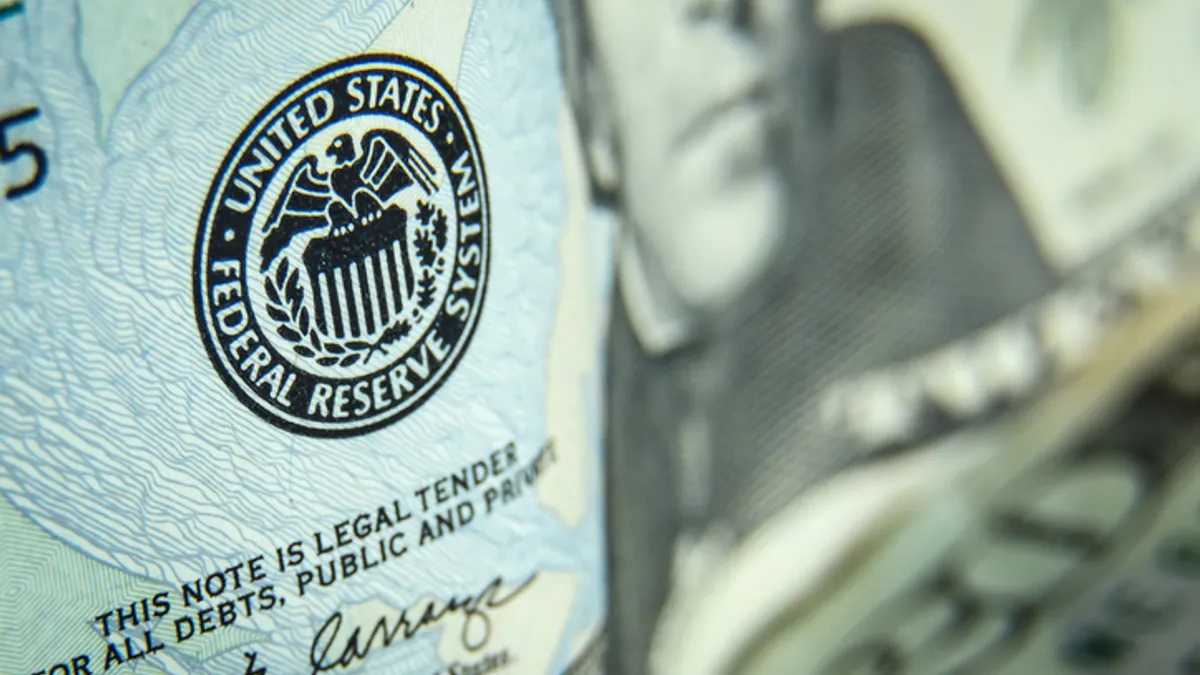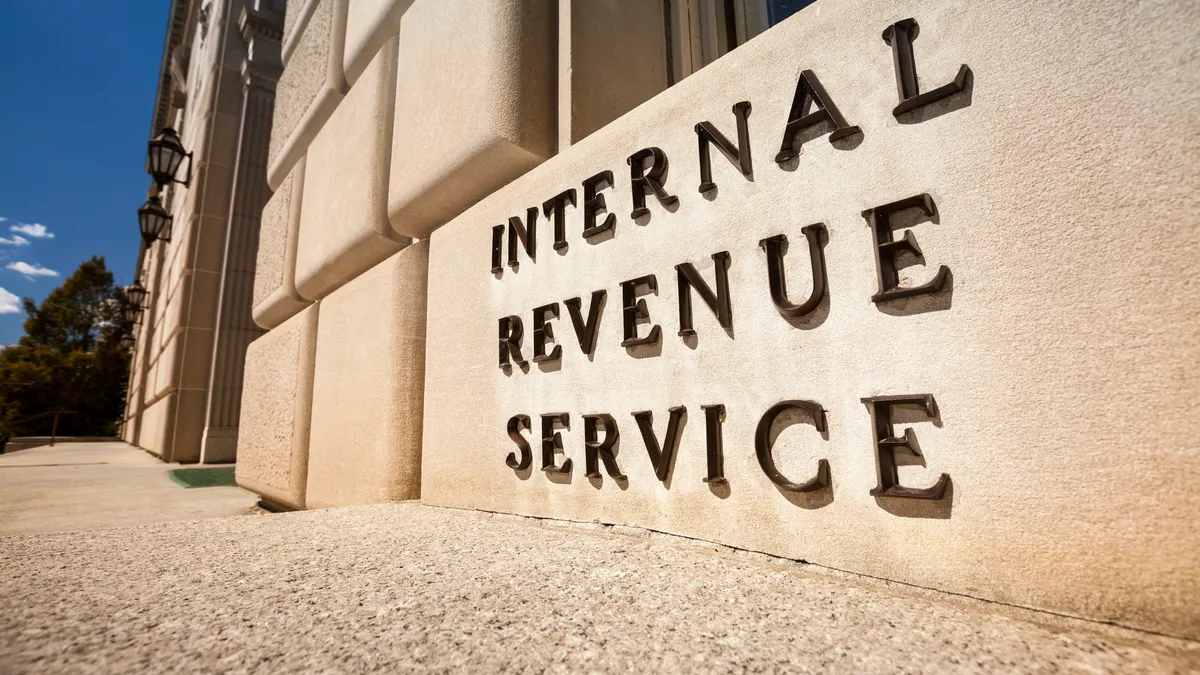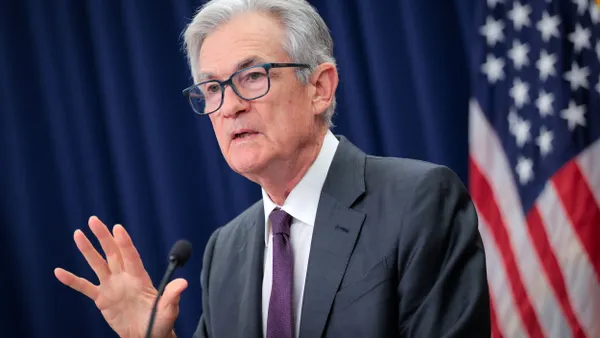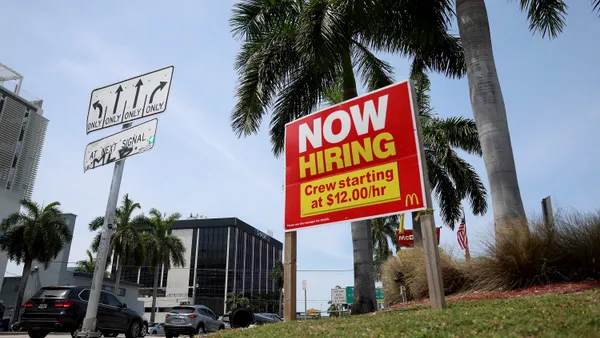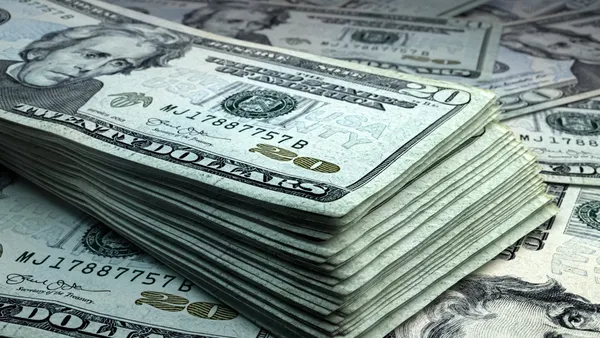Dive Brief:
- Inflation rose last month less than forecast, Bureau of Labor Statistics data show, bolstering expectations that the Federal Reserve will trim borrowing costs on Wednesday and in December at its final scheduled meeting this year.
- The Consumer Price Index increased 3% in September on an annual basis, 0.1 percentage point higher than in August, the BLS said Friday. So-called core CPI, which excludes volatile food and energy prices, also rose 3%.
- “This report will clearly keep the Fed on track to cut rates at its next meeting on Oct. 29,” Art Hogan, chief market strategist at B. Riley Wealth, said in an email. “The Fed has made clear that they are more focused on the softening labor data and will continue to defend their full employment mandate, even with core CPI well above their 2% target,” he said.
Dive Insight:
Traders in interest rate futures see 96.7% odds that the central bank will trim the federal funds rate by a quarter percentage point on Oct. 29 from its current range between 4% and 4.25%, according to the CME FedWatch Tool.
Responding to the new inflation data, traders increased the odds that the Fed will cut the benchmark rate by at least a quarter point in December to 96.9% from 91.1% on Thursday, according to the FedWatch Tool.
Fed policymakers, flagging weakness in the labor market, reduced the main rate by a quarter point last month even though inflation persists well above their goal. It was their first rate cut this year.
Tariffs persisted last month as fuel for inflation. Goods sensitive to import taxes led price gains, with the cost of apparel, furniture and bedding, and sporting goods increasing during September by 0.7%, 0.9% and 1%, respectively.
“Tariffs continue to put significant upward pressure on core inflation,” Oliver Allen, senior U.S. economist at Pantheon Macroeconomics, said in a report, noting that the 0.34% monthly gain in core goods excluding autos was the highest since June.
“Businesses have so far shielded consumers from much of the increase in costs due to tariffs by absorbing them in margins, but further pass-through seems very likely in the months ahead,” he said.
Slight increases in rent and other housing costs provided a bright spot in the September inflation data.
Shelter prices rose just 0.2%, or half the pace in August. The index for owners’ equivalent rent edged up 0.1% in the smallest monthly increase since January 2021, the BLS said.
Inflation in services “is likely to grind lower, given the weak labor market and clear signs that shelter inflation has further to fall,” Allen said.
Policymakers will probably cut the federal funds rate by 0.25 percentage point at each of their two final meetings this year, and by 1.25 percentage points in 2026, he said.




